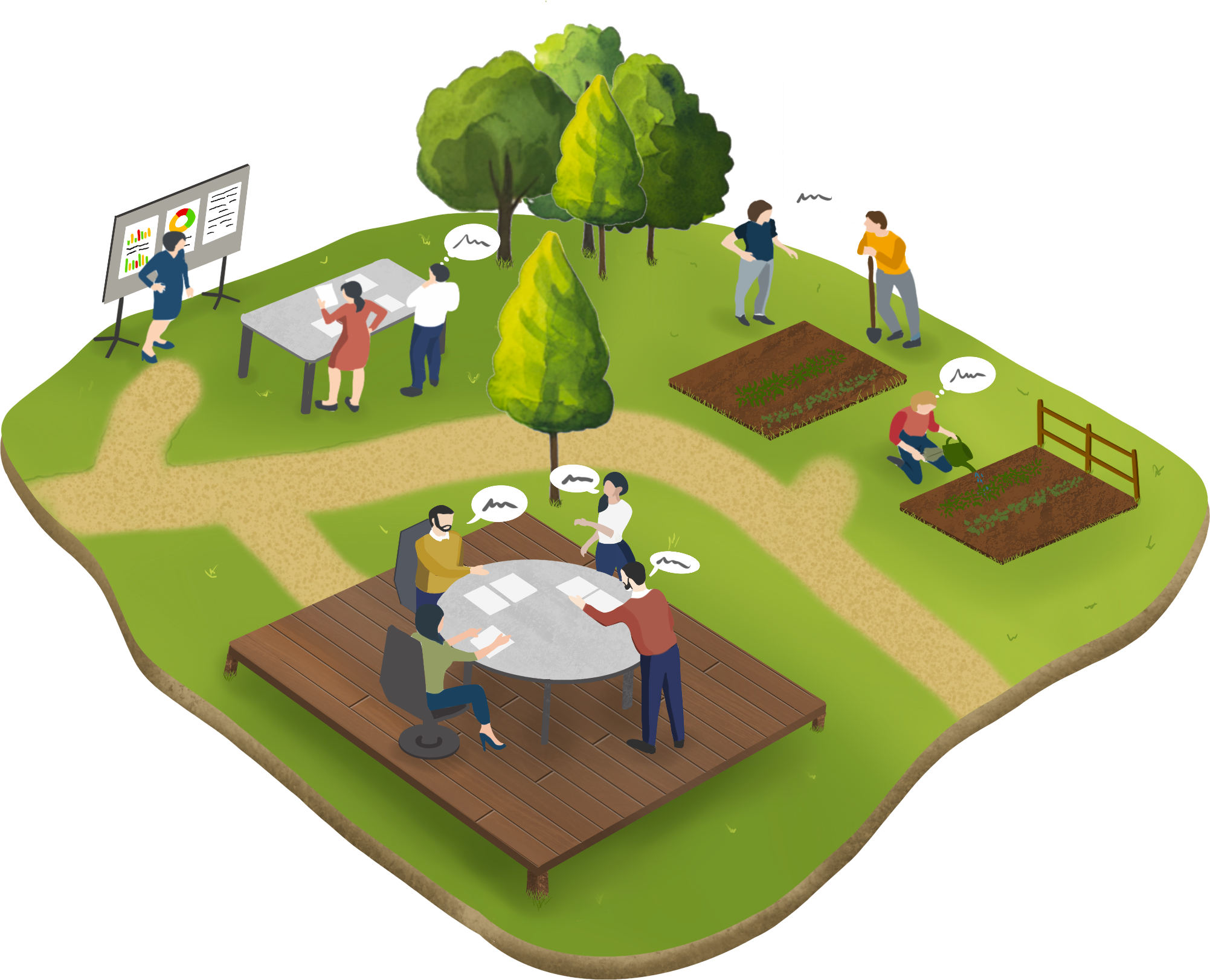Fostering Adoption
The adoption of sustainable soil management practices remains low across Europe (e.g., Heller et al., 2024). While some barriers are biophysical, many are socio-economic, including limited access to knowledge and technical advice, economic constraints, insufficient incentives, ineffective policies, and deeply rooted farming traditions and perceptions (Vanino et al., 2023; Thorsøe et al., 2023). The EJP SOIL program worked to bridge the gap between science and policy to encourage broader adoption of these practices. Efforts included evaluating available tools, exploring methods for stakeholder engagement, and developing strategies to create incentives.
Support tools evaluation
To make decisions about soil management that are conducive to soil health, land managers and other stakeholders need reliable information and appropriate tools. Decision Support Tools (DSTs) may serve multiple functions e.g., practical decision making, registration, and monitoring. Substantial differences exist in current fertilisation guidelines across Europe, in the content, in soil test methods and how crop nutrient requirements are calculated, in the format and in their delivery (Higgins et al. 2023).
Deliverables and reports
Tools for stakeholder engagement
Stakeholder engagement is crucial, in various instances and arena, to foster use of existing soil knowledge, development of new soil knowledge and implementation of sustainable management of agricultural soils. Stakeholder consultations (e.g., Vanino et al. 2023, Thorsøe et al. 2023, Heller et al. 2024) allows to identi. Citizen science indeed raises awareness among participating stakeholders and contributes to develop soil knowledge (Mason et al. 2024). There is a need, however, to institutionalise soil health science-policy-practice interfaces, such as done in the EJP SOIL National Hubs
(Visser et al. 2023).
Peer reviewed articles
Policy briefs and notes
Deliverables and reports
Incentives and policy evaluation
The EJP SOIL concentrated on existing European policies (e.g., Farm2Fork strategy), on policies under development (Carbon Removals and Carbon Farming Regulation, Soil Monitoring and Resilience Directive) as well as on existing incentives, such as carbon faming schemes). Economic incentives for C sequestration, i.e. carbon farming schemes were inventoried and analysed, which allows to drive recommendations (e.g. Cruiscoli et al. 2024). Scenario modelling helps assessing the effect of policies or monitoring the policy goals set (e.g. Farm to Fork goals for 2030 and 2050).
Peer reviewed articles
Policy briefs and notes
Deliverables and Reports
Datasets
Webinars & Educational Materials
Thorsøe, M.H (2024). Carbon farming schemes – Analysis and online Map. EJP SOIL snack cards.
Capacity building and education
Sustainable and climate smart management of soils requires human and institutional capacity, expertise and competencies in soil science and agronomy. Soil science related expertise will be more and more in high demand to serve academic, policy and practices of the European Green Deal, the EU Soil Strategy for 2030 and the proposed EU Directive on Soil Monitoring and Resilience. The established baseline of soil science in higher education (Barron and Villa, 2022) was complemented with an analysis of skills needed in the future for fostering sustainable soil management, and of related professional profiles (Veenstra et al. 2024, Walter et al. 2024).
Peer reviewed articles
Policy briefs and notes
Barron, J., & Villa, A. (2022). Soil Science in higher education in Europe current state and recommendations. EJP SOIL policy brief.
Webinars & Educational Materials

Illustration by Laura Laroche
